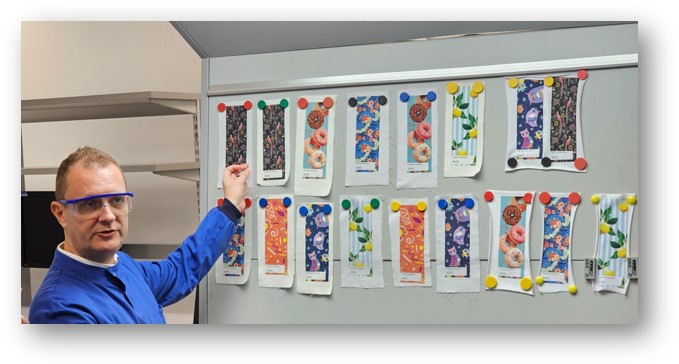Visitors to Xaar’s recent open day and FuturePrint Tech conference in Cambridge were the first to see the results of a research study into jetting high viscosity water-based inks, performed by Dr Chris Phillips and Professor Davide Deganello at the Welsh Centre for Printing and Coating, Swansea University.
During the open day, Phillips provided independent evidence of the results of jetting higher viscosity inks when compared to ‘conventional’ viscosities on both coated and uncoated substrates. Measured colour densities were seen to be up to 60% higher in examples using the Xaar Aquinox printhead and cyan water-based inks by Nazdar.
In addition, the trials on the non-coated board showed that by using Xaar’s Ultra High Viscosity to enable a higher pigment load than is usually possible, a far higher colour density is achieved. This opens up the possibility of removing the primer when printing onto cardboard, delivering sustainability and process simplification benefits.
Xaar group research and development director Karl Forbes presented the results as part of his talk titled ‘Seeing is Believing’ at FuturePrint Tech’s ‘Digital Print for Manufacturing’ conference. “Independent research from Swansea University shows the impact that high viscosity inks can have in traditional print applications with Xaar’s Ultra High Viscosity Technology. By improving print quality at higher speeds with less ink and energy required, the ability to jet a wide range of high viscosity, high particle loaded fluids is driving change on many levels,” he said.
The full results of Swansea University’s research will be made available shortly and the project will continue to investigate the process, functionality, cost and sustainability benefits, jetting high viscosity, high particle loaded fluids can deliver.


